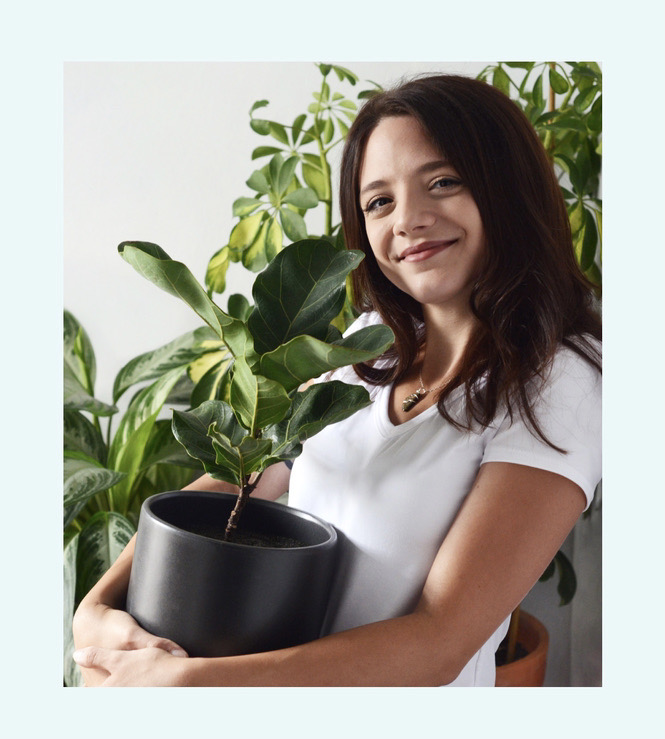Why are my hibiscus leaves turning yellow?
Discover the likely causes and how leading experts solve this common issue


Watching precious hibiscus leaves turn steadily yellow can be hugely frustrating, especially when you are unsure of the cause. After all, there’s no denying that these spectacularly vivid blooms look less impressive against sickly foliage. But help is at hand with this expert guide as we ask leading experts to explain the likely causes and how to solve them.
Understanding the reasons why this happens and how they can be prevented is key to keeping any shrub healthy and thriving. First, though, it is important to know which type of hibiscus is growing in your yard.
Prized for their beautiful, showy flowers this large plant family includes annuals, perennials, shrubs and trees. The two most popular types for growing outside are the hardy deciduous hibiscus, which is the flowering shrub hibiscus syriacus and the tender evergreen shrub Chinese hibiscus, hibiscus rosa-sinesis. Each type has its own distinct characteristics and growing requirements, so it pays to know which you are dealing with before attempting to solve any issues.
Why is my hibiscus leaves turning yellow?
There are several reasons why the leaves on any plant start to yellow, but this can be particularly frustrating with a flower-laden plant that’s as showy as hibiscus. Known for their bold, exotic blooms in a host of dazzling shades, these highly prized garden favorites sit at the heart of many flower bed ideas and tropical garden ideas making any signs of illness even more conspicuous and concerning. The good news is though, if you catch the signs early and act appropriately and promptly, the plant can quickly regain its green, healthy foliage.
Why are the leaves of my hardy, deciduous hibiscus turning yellow?
‘Leaf yellowing on cold hardy hibiscus – Hibiscus moscheutos – is a sign of stress in the plant that could be caused by a variety of conditions. Some of the most common are drought, over watering, or an imbalance of nutrients in the soil,’ explains Kristen Pullen, Woody Ornamental Portfolio Manager, Star® Roses and Plants. ‘When it comes to watering, if leaves are curling downwards and appear shrivelled this is typically a reaction to drought. Give your plants a good soak to revive them and then water as required to keep your soil moist.’
Yellowing leaves can also be a sign of over watering or poor drainage as Kristen explains, ‘Heavy soils like clay or over compacted sites drain too slowly for Hibiscus. Try moving your plant to a better drained area. Watering every day can also cause yellow, drooping leaves. Be sure that your watering is enough to soak the soil, but not leave it boggy for long periods of time.’

Kristen is Woody Ornamental Portfolio Manager at Star® Roses and Plants where she co-ordinates the development and launch of all new trees, shrubs, and edible plants. After completing a Bachelor of Science in Biology at Rider University she has managed domestic and international trials of woody plants before taking up her current role.

What is causing the foliage of my tropical or Chinese hibiscus to yellow?
Loved for their glossy leaves and magnificent, but short-lived flowers, hibiscus rosa-sinesis is widely grown in warmer climes and brings a distinctly tropical feel to any deck or patio. Perfect as a show-stopping feature or in groups for privacy it can be alarming to spot yellow leaves appearing. Fortunately, there are some common causes.
Design expertise in your inbox – from inspiring decorating ideas and beautiful celebrity homes to practical gardening advice and shopping round-ups.
‘Yellow leaves are like the upset stomach of the gardening world – one symptom can be caused by many things,’ explains Justin Hancock, Horticulturist, Costa Farms. ‘In Tropical Hibiscus (Hibiscus rosa-sinensis), that may be over – or underwatering, heat stress (onset of excessively warm or particularly cool temperatures), attack from pests, or hunger (brought on by a nutritional deficiency).’
Justin adds, ‘To stop the yellowing, take a look at the plant’s care and make sure your Hibiscus is getting the light/water it needs, and that there are no obvious signs of pests. Look at the weather – if there was a sudden heatwave, for instance, then there’s nothing you need to do, and your plant will recover on its own once temperatures cool. A soil test can tell you if there’s a nutrition issue.’

Passionate about plants (indoors and out!), Justin is a consumer horticulturist who’s been getting his hands dirty in the industry for more than 25 years. Before joining the Costa Farms team 2013, he was a garden journalist and has broadcast on local and national networks.
Why are my potted hibiscus leaves turning yellow?
There are a few different reasons the foliage of a container-grown hibiscus can start turning yellow. Erratic watering can be one cause as plant expert Paris Lalicata explains, ‘Be sure to allow about the top 2-3 inches or half the soil to dry out between waterings and refrain from letting this plant dry out completely. You also want to make sure you aren’t watering this plant too frequently, and always check the moisture of the soil prior to watering to ensure at least 30-50% of the soil volume has dried out.’
Lack of bright sunlight can be another cause of nutrient deficiency. ‘If you notice mostly the older, lower leaves of the plant turning a pale yellow but not dying it could be related to a nutrient deficiency,’ adds Paris. ‘If so, it’ll either be best to repot the plant with a fresh potting mix that is rich in nutrient-rich organic matter or start fertilizing your Hibiscus on a bi-weekly to monthly basis to supply the nutrients it may need.’

Paris has been with The Sill for almost 5 years and heads up Plant Education and Community. A self-taught plant expert with over ten years of experience growing houseplants, she currently maintains an indoor garden of over 200 plants in the northeast. Her passion is making plant care more digestible for budding plant parents and sharing the many benefits of having plants indoors.
How do I treat yellow leaves on my hibiscus?
One of the most likely causes of yellow leaves appearing on a tropical hibiscus is a sudden change in the amount of water or temperature. Caused by drought, heavy rainfall, high or low temperatures the foliage should return to its green coloring once the weather conditions stabilise. It’s also possible that a change in foliage color can indicate a lack of key nutrients such as nitrogen, phosphorus and potassium. Treat with a dose of NPK fertiliser or multipurpose flower food.
What does an overwatered hibiscus look like?
Tropical hibiscus is a little picky when it comes to watering, and absolutely hate sitting in water for any length of time. Signs of overwatering are leaves that turn yellow, or even brown, and that feel thick and spongy. Foliage also appears droopy. Check the soil – if it is sodden or waterlogged – it’s best to lift the plant up and check for rotting roots. Heathy roots are cream in color and firm to the touch.

Journalist Jill Morgan has spent over 20 years writing and editing gardening, interior and property features. Titles she has worked on include The English Home, House Beautiful, Ideal Home, Houzz and Modern Gardens and she writes regularly for H&G as a Contributing Editor. Whilst she is a dab hand at renovation projects and DIY, she is happiest when out digging in the garden or planning a new border.